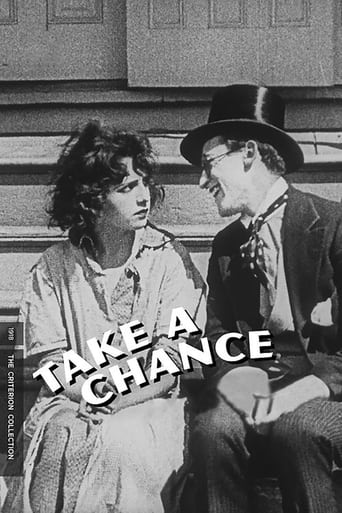boblipton
Harold Lloyd had switched from his Lonesome Luke character to his more normal looking "Glasses" character the previous year. He had insisted on this because he felt that he wanted to be able to do more than Chaplin-at-Keystone slapstick comedy. In this one, he's still doing that style of comedy -- with a coda that suggests Chaplin's Mutual short THE ADVENTURER -- although there' s little to complain about in this one, It's quite funny.Harold, dressed in formal morning clothes, snags a ride with Snub and Bebe to go a picnic. There are several good, rough gags along the way, and Harold gets to do some good pratfalls and kicks, as well as a good, early thrill gag. If you're looking for a story, or character, as Harold would later offer when he worked at greater lengths in the 1920s, you won't find those here, but you will find some well executed jokes and gags. Producer Hal Roach was definitely building a team that could build good comedies.
MartinHafer
In the 1920s, the most successful film comedian was Harold Lloyd-- even more successful than his competitors, Buster Keaton and Charlie Chaplin. However, in 1918 when this film was made, Lloyd still hadn't hit his stride and created truly memorable films. Instead, he was making rather forgettable films in which his character was unimportant...it was just slapstick. Let me explain the difference. In the 20s, Lloyd succeeded because folks came to like the characters he played--sweet guys with a lot of gumption. But in slapstick, the characters are unimportant and what is important are gags and pratfalls...in other words, cheap laughs. Here in "Take a Chance", the film is nothing but cheap laughs. So even though Lloyd finally was not playing his very forgettable Lonesome Luke character and looks like the guy he was in the 20s, he didn't act the least like him. Together, he, Sub Pollard and Bebe Daniels simply were interchangeable characters...all seeking quick laughs and nothing more. Because of this, the situations they put the three in weren't so important but laughs were...though when seen today this is an amazingly unfunny and even tedious film. What do an unattractive lady who likes to kiss men, Lloyd stealing a girl from Snub or an escaped convict have to do with each other? Nothing...and the film comes off as disjoint and forced. Back in the slapstick era folks might have laughed at folks getting bonked on the head and the like, but when seen today the film just seems tiresome and a waste of really talented actors.
cricket crockett
Though this is perhaps the funniest title card during this 10 minute, 19.92-second Harold Lloyd silent, black & white comedy short, Lloyd historians Richard Correll and John Bengtson agree on their commentary track for this piece of film history that that line probably contains a typo. The Harold Lloyd character has just fallen on a bar of soap dropped by a maid for the residence he's walking past, and he threatens to "sue." That's when the maid says, through the title card, "Clam yourself, mister--my name ain't sue" (evidently, she is not only clumsy, but also hearing-impaired). Just before this tragic incident, the foppish Lloyd character has flipped his last quarter to decide on whether using it to pay for a much-needed haircut, or to purchase a desperately-required lunch--and the quarter has rolled into a sidewalk storm water grate! All in all, it is not this man's day, as bad transforms to worse, and he finally winds up being shot at by prison guards!
Single-Black-Male
Harold Lloyd is absolutely amazing in this two-reeler. His slapstick comedy has pitch-perfect fluency, and his recreation of events is well-observed. He is an eye-witness of his times, and a with a good voice-over his work is compelling.


